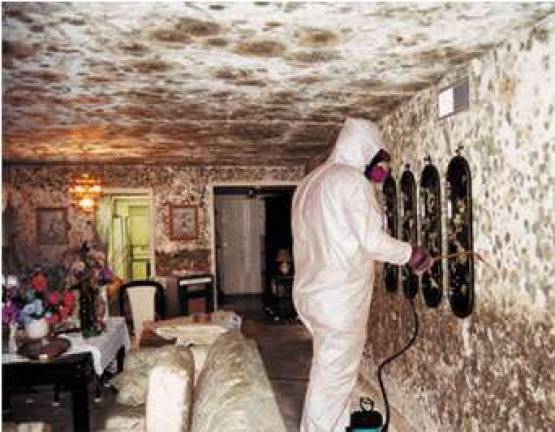Is Lower Manhattan at Risk for Contamination?

Hurricane Sandy has long since passed, but concern remains over lasting environmental hazards Though the waters have receded after Hurricane Sandy, many downtown residents may be facing a yet-unseen but potentially hazardous problem as a result of the severe flooding. Congressman Jerrold Nadler, who represents Lower Manhattan communities hit especially hard by the storm, has expressed concern over what he predicts will be a serious mold and contaminant problem in homes and workplaces that found themselves in the flood zone. "We must not repeat the same mistakes of 9/11 by leaving people to their own devices to clean up complex toxins without proper guidance or assistance from the federal government," Nadler said in a statement, urging federal oversight of mold and toxin cleanup following the storm. Nadler has contacted both the Environmental Protection Agency and the Federal Emergency Management Agency to insist that comprehensive testing for mold and toxins be conducted in homes and workplaces affected by the storm. David Frome, owner of the Air Cleaner Store and an expert in mold and toxins, said Nadler's concern is justified. "Sandy's floods released toxic chemicals and biologic waste into the water," said Frome. "Sheetrock and carpeting that was soaked by the storm's water should be treated as hazardous waste. Removing it safely needs to be our first priority." Frome said everyone who experienced flooding is at risk for mold and mold spore exposure, which is "perhaps the largest of the immediate health problems." "The Federal government has not established safe levels of mold exposure," Frome explained. "Each person has a different sensitivity. Some people can be exposed to high concentrations of mold without effect; others can develop a range of symptoms." According to Howland "Howdy" Russell, the spokesperson for Paul Davis National, a cleanup service that specializes in natural disasters, the complex cleanup process is already under way in badly affected areas of New York, where the group had been deployed following the storm. "It's quite a challenge, as the buildings are filled with sand, mud and debris," Russell said. "A key priority is to contain and control any microbial growth right away, ensuring a healthy and safe environment for the property owners and families." Others insist there's no reason for New Yorkers to panic about the issue. Ron Alford, a crisis management and recovery coach whose official website says he has "spent his lifetime helping other people in a crisis," believes the issue of mold is exaggerated as a money-making scheme. "The mold, asbestos, lead issues are overblown and are in my opinion scare tactics that the new mold industry uses to scare people out of their money," Alford said. "There is not one active kitchen or bathroom in NYC that does not have some form of mold," he added. While Alford believes the mold-related fear-mongering is hyperbolized in the wake of Sandy, he said he does not feel qualified to comment on the toxic after-effects of 9/11. Bob Carlson, who has taught mold remediation for years and helped draft a textbook on the subject, echoed Alford, saying the important thing is not to overreact to the situation. "People freak out when they don't need to, and miss the insidious hazards that may be lurking," said Carlson. "There are many thousands of species of mold, and they come in all colors," he said. "Aspergillus floats in the air easily, and is one of the most common genera of mold out there." According to the Centers for Disease Control and Prevention, most people breathe this mold's spores on a regular basis. Carlson said with some of the most dangerous molds, you would have to go out of your way to have them be of any consequence to your health. His analysis of some of the unpredictable aspects of the environmental impact, however, was a bit on the ominous side. "As far as toxins go, after disasters all kinds of stuff happens," Carlson said. "Underground storage tanks pop out of the ground, aboveground tanks collapse, pipelines rupture, 55-gallon drums go floating downstream-you name it."